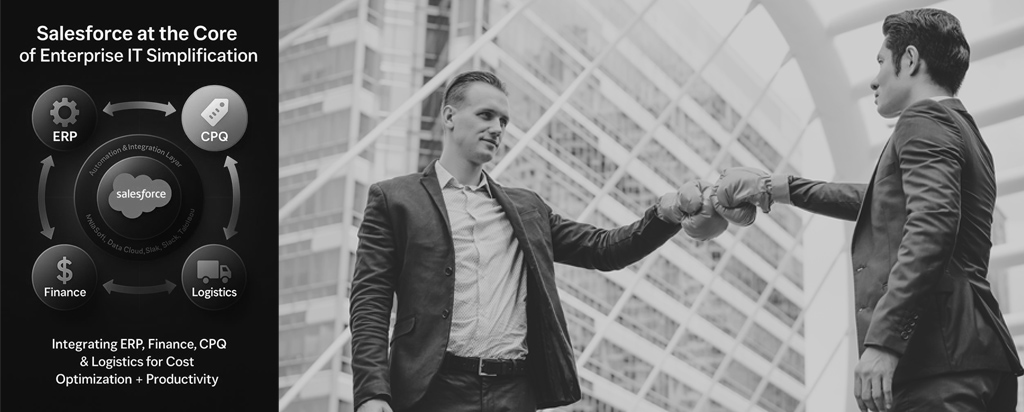Consolidate to Compete: Salesforce as the Core of Enterprise IT Simplification
By Rafat Khan, CRM Delivery Head, Nihilent Limited
Consolidate to Compete: Salesforce as the Core of Enterprise IT Simplification
CIOs are rebalancing their IT portfolios. The mandate is clear: reduce complexity, consolidate platforms, and unlock productivity.
Industry research shows the average large/global enterprise now manages ~275 SaaS applications with annual SaaS spend around $49M, yet $18M of that is wasted in unused licenses and duplicate tools.
The opportunity is to rationalize around a core platform that not only covers CRM but synchronizes seamlessly with ERP (SAP, Oracle, Dynamics), Finance & Billing (Zuora, SAP, NetSuite), HR (Workday, SuccessFactors, ADP), and Logistics & Supply Chain (FedEx, UPS, DHL integrations via MuleSoft). This is where Salesforce’s ecosystem approach changes the economics.
With Sales, Service, Revenue/CPQ, Marketing, Commerce, Data Cloud, MuleSoft, Slack, Tableau, and Einstein AI working in concert, enterprises reduce integration drag, unify data, and connect front-office to back-office.
Automation flows from quote-to-cash, hire-to-retire, and order-to-ship pipelines are streamlined which is minimizing swivel-chair inefficiencies across ERP, CPQ, Billing, Finance, and Logistics systems.
The results are compelling:
-
30% of IT is optimized via rationalization and automation.
-
354% ROI seen in Salesforce TEI studies for manufacturing organizations
through unified processes. -
IDC projects Salesforce’s AI-powered platform will generate $948B in new customer revenues by 2028, showing consolidation is not just about cost defense, but growth acceleration.
What does this look like in practice:
-
ERP + Salesforce: Inventory, pricing, and order orchestration flow into CPQ/Revenue Cloud for automated quote-to-cash.
-
Finance + Salesforce: Invoices, payments, and renewals tracked natively, reconciled with SAP/Oracle for compliance.
-
HR + Salesforce: Role-based service automation, onboarding journeys, and employee experience integrated with Workday/SuccessFactors.
-
Logistics + Salesforce: Shipment visibility and proactive service updates, powered by MuleSoft connectors to FedEx, UPS, DHL.
The bottom line is that Salesforce has increasingly become the central nervous system for enterprise IT, which is reducing portfolio bloat, cutting running costs, boosting productivity, and unlocking end-to-end automation across ERP, Finance, HR, and Logistics.
Most Read
May 28, 2019
Driving Operational Excellence Through Design Thinking
February 11, 2020
The Art of Data Science
June 12, 2019
Financial Inclusion through Digital Diversification





